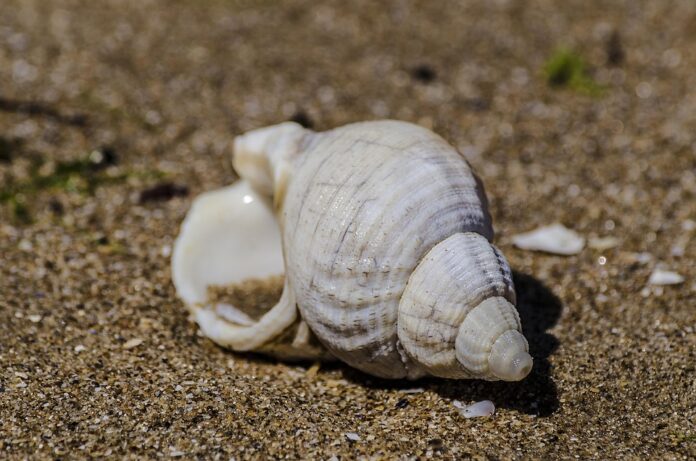Sea urchin processing is a lucrative industry that has been growing rapidly in recent years, driven by increasing demand for this delicacy in global markets. However, this industry also generates a significant amount of waste in the form of byproducts such as shells, spines, and internal organs. In this report, we will explore how waste reduction strategies in sea urchin processing can not only help protect the environment but also turn these byproducts into valuable products that can generate additional revenue for businesses.
Current State of Sea Urchin Processing
Sea urchin processing involves the extraction of roe, which is the edible part of the sea urchin that is highly prized for its unique flavor and texture. The roe is typically harvested, cleaned, and processed before being sold to restaurants and seafood markets around the world. However, this process also generates a significant amount of waste in the form of shells, spines, and internal organs, which are often discarded as byproducts.
Environmental Impact of Sea Urchin Processing Waste
The waste generated by sea urchin processing can have a negative impact on the environment if not properly managed. Sea urchin shells and spines can take years to decompose and may accumulate in coastal areas, posing a threat to marine life and ecosystems. Additionally, the disposal of sea urchin waste can contribute to water pollution and harm local fishing communities that rely on clean water for their livelihoods.
Financial Costs of Sea Urchin Processing Waste
In addition to the environmental impact, the disposal of sea urchin processing waste can also incur significant financial costs for businesses. Transporting and disposing of byproducts such as shells and spines can be expensive, especially if businesses are required to comply with strict waste management regulations. This can cut into profit margins and reduce the overall profitability of sea urchin processing operations.
Waste Reduction Strategies in Sea Urchin Processing
To address these challenges, many businesses in the sea urchin processing industry are implementing waste reduction strategies to minimize the amount of byproducts generated during the processing of sea urchins. These strategies not only help protect the environment but also create new revenue streams by turning waste into valuable products.
Utilizing Sea Urchin Byproducts
One of the most common waste reduction strategies in sea urchin processing is to utilize byproducts such as shells, spines, and internal organs for other purposes. For example, sea urchin shells can be crushed and used as a natural fertilizer for crops or as a supplement for livestock feed. Sea urchin spines can also be repurposed for use in jewelry and decorative items, while internal organs can be processed into high-protein food products.
Creating Value-Added Products
Another waste reduction strategy is to create value-added products from sea urchin byproducts. For example, sea urchin shells can be ground into a fine powder and used in cosmetics and skincare products for their exfoliating properties. Sea urchin spines can be processed into calcium supplements or used in traditional medicine for their purported health benefits. By adding value to these byproducts, businesses can generate additional revenue and reduce waste at the same time.
Financial Benefits of Waste Reduction in Sea Urchin Processing
Implementing waste reduction strategies in sea urchin processing can lead to significant financial benefits for businesses in this industry. By utilizing byproducts and creating value-added products, businesses can reduce waste disposal costs, increase revenue from the sale of new products, and improve overall profitability.
Case Study: The Financial Impact of Waste Reduction
For example, a sea urchin processing facility in California implemented a waste reduction program that focused on repurposing sea urchin shells into natural fertilizers for local farms. By selling the crushed shells to agricultural companies, the facility was able to offset the costs of waste disposal and generate an additional $50,000 in revenue per year. This not only improved the facility’s bottom line but also helped reduce its environmental footprint in the local community.
Industry Outlook and Trends
As consumer demand for sea urchin continues to grow, the sea urchin processing industry is expected to expand in the coming years. This presents an opportunity for businesses to implement waste reduction strategies that can help them stay competitive in the market while also promoting sustainability and environmental stewardship.
Emerging Technologies in Waste Reduction
Advancements in technology are also driving innovation in waste reduction strategies for sea urchin processing. For example, some companies are exploring the use of biodegradable packaging materials made from sea urchin byproducts, reducing the need for traditional plastic packaging and further minimizing waste in the supply chain. These technologies not only help businesses reduce their environmental impact but also appeal to environmentally conscious consumers who prioritize sustainability.
In conclusion, waste reduction in sea urchin processing is not only essential for protecting the environment and promoting sustainability but also presents a valuable opportunity for businesses to generate additional revenue and improve their bottom line. By implementing innovative waste reduction strategies and creating value-added products from byproducts, businesses in the sea urchin processing industry can minimize waste, reduce costs, and position themselves for long-term success in a competitive market.




